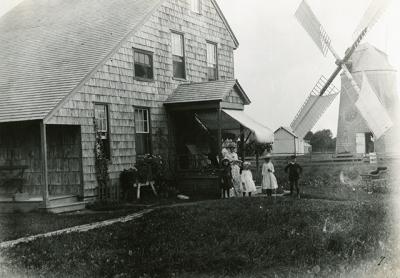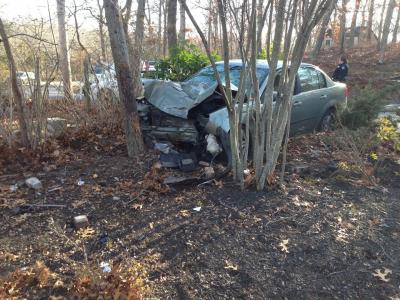Decision on Bowhunting Delayed Until January
Decision on Bowhunting Delayed Until January
The Sag Harbor Village Board on Monday tabled a law that would bring its code in line with state laws and allow bowhunting on private property with an owner’s permission. The decision came after hunters challenged a ban the board had enacted two years ago.
On advice of counsel, the village board had proposed a law that would allow hunting on private property as long as the owner is the one hunting or he or she has given written permission to someone to hunt there. The proposal states that it is in the village’s best interest to be consistent with New York’s Environmental Conservation Law. Hunting with firearms remains prohibited.
In recent years, the State Department of Environmental Conservation amended its own regulations on bowhunting by reducing the setback for the discharge of a long bow from 500 feet to 150 feet from a house the owner of which does not consent to the hunt.
But, responding to complaints from residents about hunting in the village, where houses are often close together and there is not much open space, in 2015 the board passed a law that prohibited all hunting. There was a law on the books that dated to 1932 outlawing hunting, but it did not specifically mentioned bow-and-arrow hunting.
Concerns from Hunters for Deer, a not-for-profit that arranges for insured and proficiency-tested bowhunters to hunt deer on private property, came up immediately, and a lawsuit was threatened based on the state regulations. The group was told at the time that the law would not be enforced while the village considered whether the state law pre-empted the village law. No decision was ever made and no further discussion took place, until earlier this fall, when a bowhunter who had been given permission to hunt on private property behind Oakland Cemetery through Hunters for Deer was subsequently warned by police to stay away. Court papers were filed, and while the village was given time to justify the law, the hunter went back to the property, off Suffolk Street, and was later arrested.
The Village of East Hampton requires that bowhunters obtain a permit through its office with a valid D.E.C. license and permission from the property owner, according to Rebecca Molinaro, the village administrator. North Haven Village also requires a permit. The Village of Sagaponack has no laws on the books regarding hunting.
Wendy Chamberlain, who recently moved from Bridgehampton to Sag Harbor, and who is a co-founder of the Wildlife Coalition of Eastern Long Island and a member of the Southampton Town deer protection management board, said the legal advice she has received says the village is under no legal compunction to conform to the D.E.C.’s laws.
“I want to know what you’re going to say to the first family who loses a child walking through the woods,” she said.
“I do not want to be that family that there is an issue,” said Jennifer Joly, who has an autistic child and lives across the street from where the hunter was arrested in October. She does not believe that hunting should be allowed in residential areas and agreed with a point Ms. Chamberlain made that the law should at least include a mandate that any property being hunted be posted so people can avoid the area.
John Linder, the property owner on Suffolk Street who had allowed the hunting in the fall, called it a humane way to manage the population. “We have eliminated their habitat; we see them on the road,” he said. He told the board the hunters “come at 4 a.m. Oftentimes they’re gone by daylight.”
Mayor Sandra Schroeder said she thought the state law allows hunting only during daylight hours.
Mr. Linder said that they come early to set up. “I don’t like how these people have been portrayed as irresponsible. They aren’t.”
When the discussion turned to the board, Ms. Schroeder said, “I’m totally against it. I think it’s dangerous.”
Robby Stein, the deputy mayor, made a motion to table the law for further review until the January meeting. While the rest of the board agreed, the mayor voted against doing so. “I’d like to see it disappear. I think it’s dangerous,” she said.
David J. Gilmartin Jr., the village attorney, said he would prepare a memo for the board, which will meet again on Jan. 9 at 5 p.m., instead of the usual 6 p.m., to hear a presentation on water quality.





